Brief #3 – Teaching Children to Get Along with Others
Intervention Simplified
Teaching children to get along with others
A relationship skill
Stephen N. Elliott, PhD
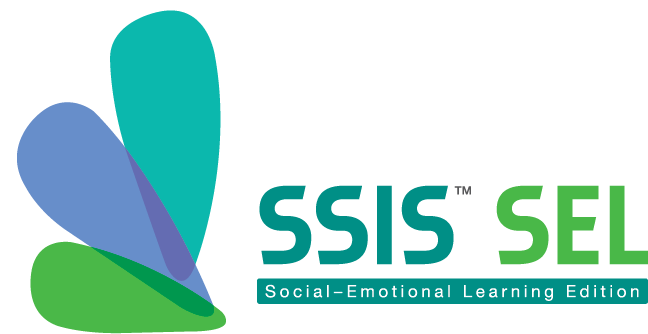
Teaching children relationship skills is fundamental to healthy social–emotional and academic development (Elliott, Frey, & DiPerna, 2012). This intervention brief describes how to teach an entire classroom of students the relationship skill of getting along with others using the intervention resources of the SSIS™ SEL Edition Classwide Intervention Program (CIP; Elliott & Gresham, 2017).
Overview of the SSIS SEL Edition CIP
The SSIS SEL Edition CIP is used by educators to develop and improve 23 social–emotional skills for children ages 4 to 14 years. Specifically, this intervention program provides interventionists with an efficient and effective way to teach children social−emotional skills that represent five core competencies. These competencies are defined as self-awareness (recognizing one’s emotions, values, and the ability to assess one’s strengths and weaknesses); self-management (the ability to handle one’s own emotions and behavior so that they do not interfere with accomplishing social tasks); social awareness (demonstrating understanding and empathy for others’ feelings); relationship skills (establishing and maintaining healthy interpersonal relationships in groups and dealing effectively with conflict); and responsible decision making (making ethical and constructive choices about one’s personal and interpersonal behaviors). These social−emotional learning (SEL) competency domains are based on those advanced by the Collaborative for Academic, Social, and Emotional Learning (CASEL, 2012) and are popular in many SEL programs used across the country.
The SSIS SEL Edition CIP uses a six-phase intervention process to teach social–emotional skills. These steps are Tell, Show, Do, Practice, Monitor Progress, and Generalize. DiPerna and colleagues (2015, 2016, 2017), in a randomized control trial in elementary schools funded by the U.S. Department of Education, provided strong evidence to support that the SSIS SEL Edition CIP six-phase program. Specifically, these researchers reported that using the six-phase process resulted in students (1) learning social–emotional skills and performing these desired behaviors more frequently, (2) concurrently reducing the frequency of many common externalizing problem behaviors, and (3) increasing academic engagement and in many cases their achievement test scores. This research documenting the triple positive impact of the SSIS SEL Edition CIP resulted in CASEL designating it “a SELect program for elementary students” (https://casel.org/guideprogramssocial-skills).
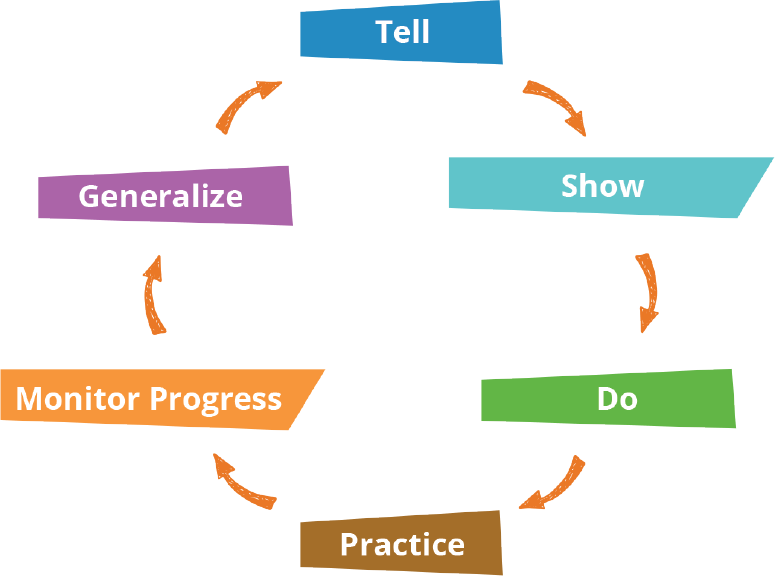
Teaching a relationship skill: Get along with others
Getting along with others is a relationship skill that teachers and parents agree is critical for successful functioning at school and home. In the SSIS SEL Edition CIP, it is defined as talking in a nice voice, sharing space and materials, taking turns, and playing well together. The steps for this skill are illustrated on the Unit 7: Get Along With Others Skill Steps Cue Card and are described as follows: Step 1: Think about what you can do to get along with others. Step 2: Talk nicely so others listen to you and know you want to be included. Step 3: Do something nice with others to show you can get along. Step 4: Smile to show people that you are friendly and have positive feeling about them. Using the six-phase SSIS SEL Edition CIP instructional process, the actions and activities for both the teacher and a classroom of students are listed below.
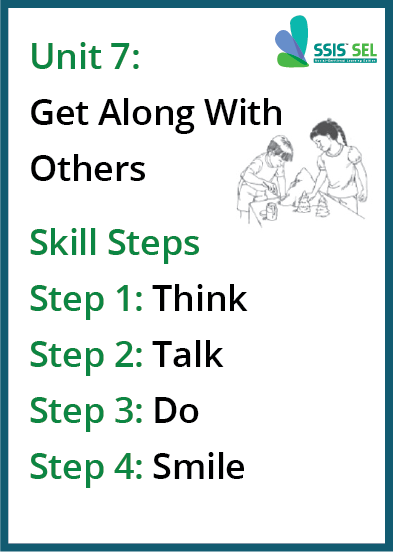
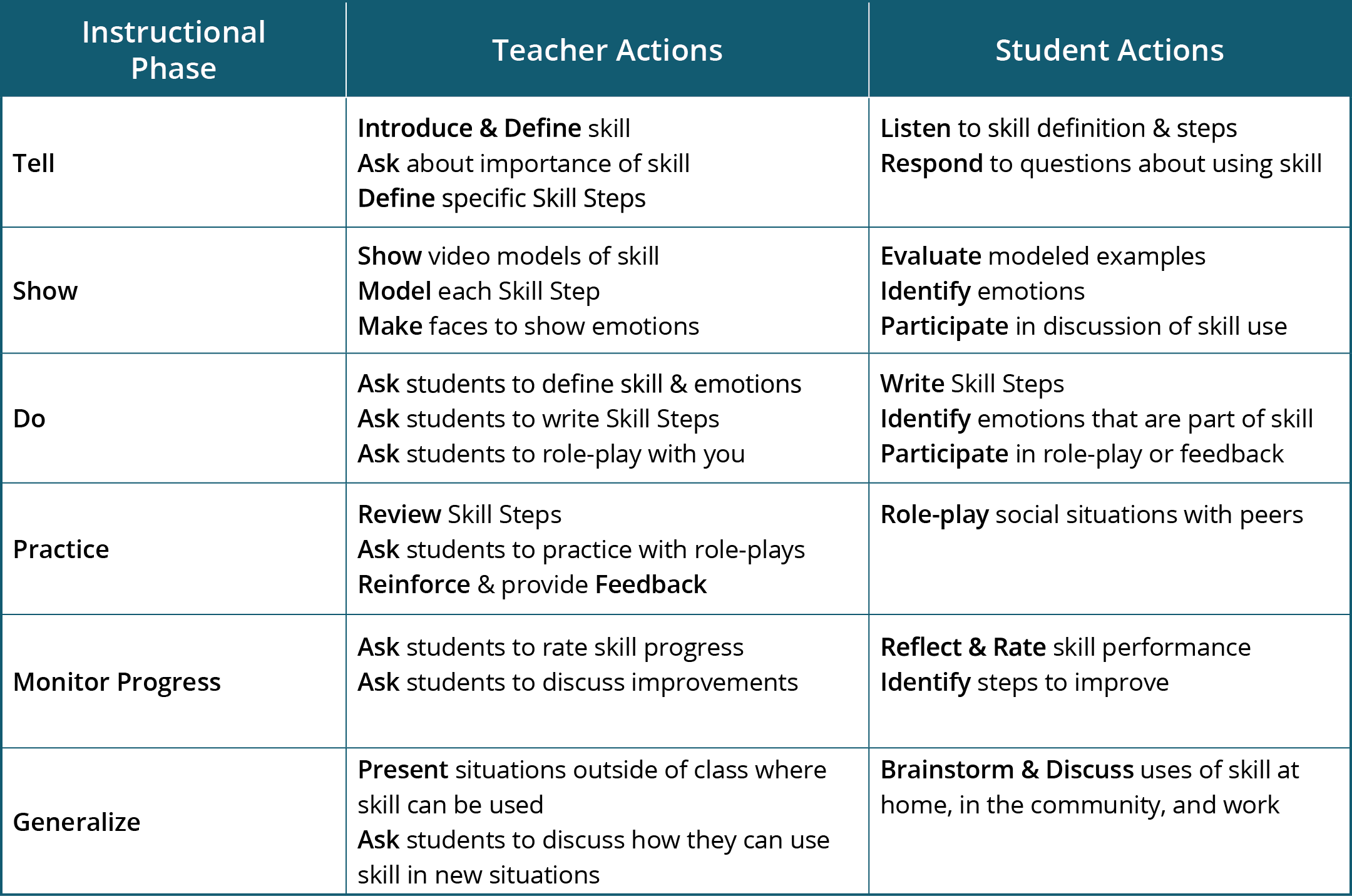
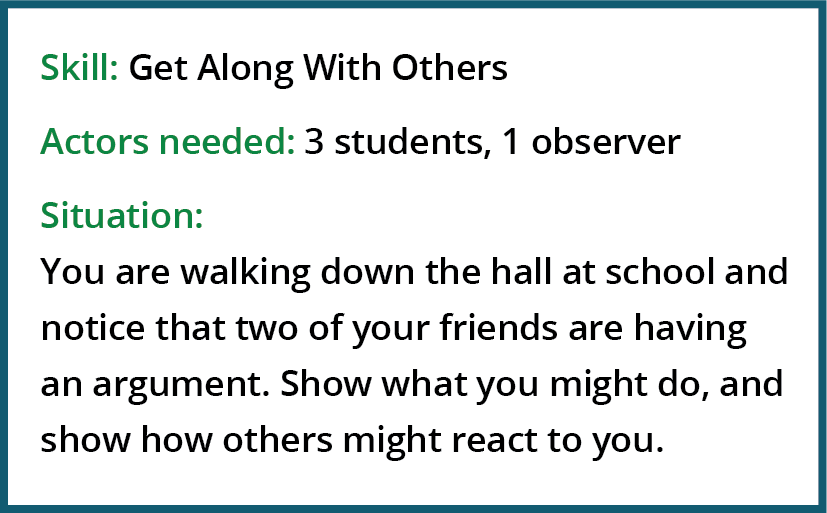
By following this instructional process, most teachers can teach a skill lesson in 25 to 30 minutes and provide a Sequenced, Active, Focused, Explicit, and Responsive (SAFER) intervention program that students enjoy and learn from. At the center of this process is a series of role-play situations (illustrated in the accompanying box) that students practice and then receive feedback on each Skill Step in a supportive classroom environment. With the additions of other SSIS SEL Edition CIP resource materials —PowerPoint™ lesson presentations, video clips, Emotions Cue Cards, Student Engagement Records— all students will be engaged and the intervention is simplified for teachers!
References
Collaborative for Academic, Social, and Emotional Learning. (2012). Effective social and emotional learning programs. Retrieved from https://casel.org/wp-content/uploads/2016/01/2013-casel-guide-1.pdf
DiPerna, J. C., Lei, P., Bellinger, J., & Cheng, W. (2015). Efficacy of the Social Skills Improvement System Classwide Intervention Program (SSIS-CIP) primary version. School Psychology Quarterly, 30(1), 123–141. doi:10.1037/spq0000079
DiPerna, J. C., Lei, P., Bellinger, J., & Cheng, W. (2016). Effects of a universal positive classroom behavior program on student learning Psychology in the Schools, 53(2), 189–203. doi:10.1002/pits.21891
DiPerna, J. C., Lei, P., Cheng, W., Hart, S. C., & Bellinger, J. (2017). A cluster randomized trial of the Social Skills Improvement System-Classwide Intervention Program (SSIS-CIP) in first grade. Journal of Educational Psychology, 110(1), 1–16. doi:10.1037/edu0000191
Elliott, S. N., Frey, J. R., & DiPerna, J. C. (2012). Promoting social skills: Enabling academic and interpersonal successes. In S. E. Brock & S. R. Jimerson (Eds.), Best practices in school crisis prevention and intervention (2nd ed., pp. 55–78). Bethesda, MD: NASP.
Elliott, S.N., & Gresham, F.M. (2017). SSIS SEL Edition Classwide Intervention Program manual. Bloomington, MN: NCS Pearson.
Stephen N. Elliott, PhD, is the Mickelson Foundation Professor at Arizona State University and the co-author of the SSIS SEL Edition Assessments and Classwide Intervention Program.
© 2018 Pearson Education, Inc. or its affiliates. All rights reserved. Pearson and SSIS are trademarks, in the US and/or other countries, of Pearson plc. LRNAS15520 EL 9/18
